Site will be
unavailable for maintenance from June. 4, 11:30 p.m., to June 5, 12:30 a.m. ET. Thank you for your
patience!
Three reasons why you should sponsor a child in India right now
Posted on 05/27/2021
Maybe you’ve heard that India is an incredible place to visit. Maybe you’ve had the pleasure of sampling the mouth-watering flavors of Indian cuisine, taking a yoga class or enjoying a Hindi-language film. But there is much more to India than you’ll ever see in a Bollywood movie.
Sponsoring a child in India is not just a chance to learn more about this fascinating country; it’s a chance to connect to a child facing some of the most unique challenges and opportunities in the world. Read on to learn why now is the time to sponsor a child in India.
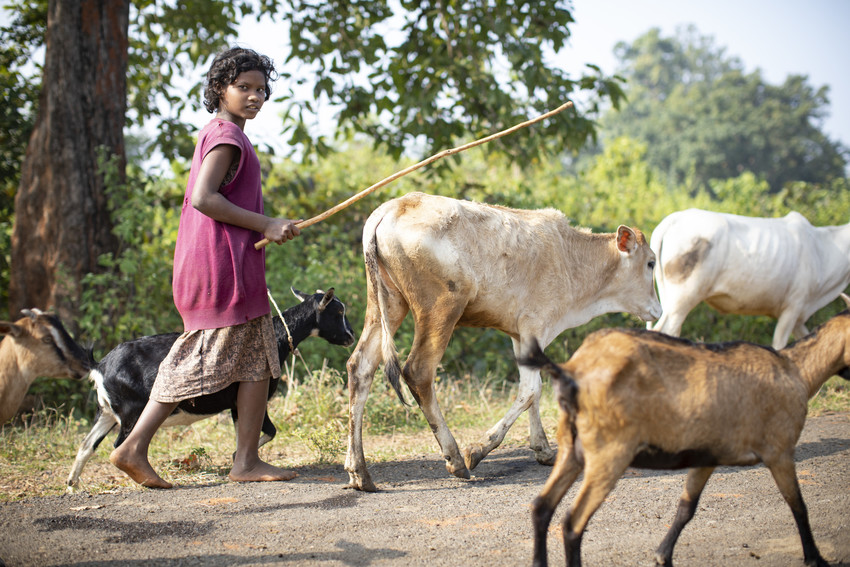
Koustari, 14, herds cattle instead of attending school
in Keonjhar District,
India. Many children in India drop out
of school
to help their families earn a living, a phenomenon exacerbated
by the
recent COVID-19 crisis. Photo by
Jake Lyell.
1. The culture is amazing.
India’s culture is extraordinary because of its unique history and position in the world. Named for the Indus River Valley, where a highly developed civilization was already flourishing by 2,500 B.C., the country is a mosaic of thousands of diverse languages, religious customs and cultural traditions. Hinduism, the oldest major religion in the world, as well as many other spiritual traditions, continue to have a profound influence in daily life, infusing a little bit of sacredness into the largest festivals and the most mundane tasks alike. You’re bound to learn about all kinds of interesting traditions when you sponsor a child in India.
Among these traditions, however, are some that can be harmful to children – like child marriage. India is home to more child brides than any other country in the world. In fact, 27 percent of girls in India are married before their 18th birthday. Those numbers are even higher in rural areas like the one where Droupadi, 15, lives. Fortunately, the ChildFund-supported youth group in her community is educating the older generations about the dangers of being married too young. When you sponsor a child in India, you’re supporting ChildFund’s work to end child marriage and other harmful traditional practices globally.
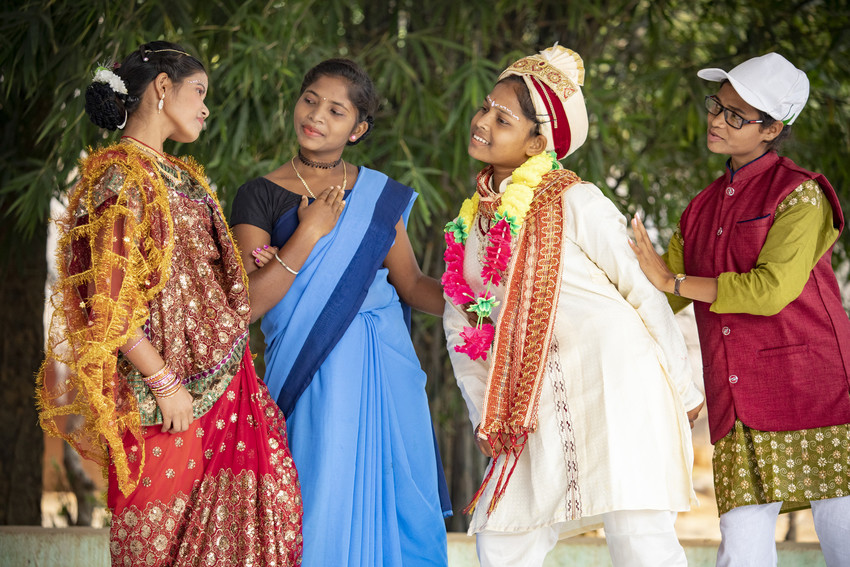
“ChildFund has stopped a few child marriages in this village and neighboring
ones, too,” says Droupadi, 15 (far right), who is playing the role of ChildFund in
her youth
group’s play about child marriage. “Parents are becoming aware of the
ill effects of early
marriage, like hampering a child’s education or being bad for
their health. So I think there’s
a growth in awareness and a decrease in the practice.”
Photo by Jake Lyell.
2. It’s one of the fastest-developing nations in the world.
But with unprecedented growth comes unprecedented income inequality and great social disparities that make the poverty here extra complicated. The rich are getting richer at a much faster pace, while the poor still struggle to earn a minimum wage and access quality education and health care. To put it into perspective, it would take 941 years for a minimum wage worker in rural India to earn what the top paid executive at a leading Indian company earns in a year. And the widening gaps affect women and children the most.
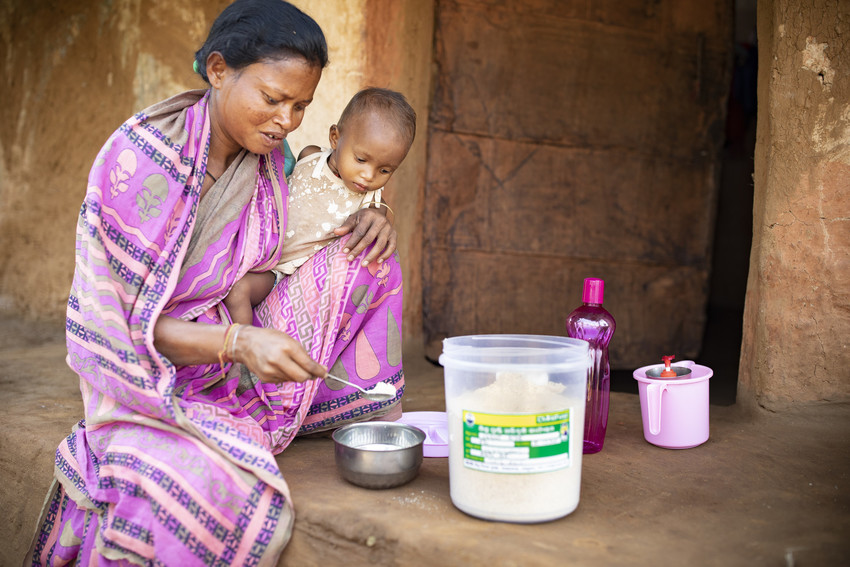
Kainta prepares a nutrient-rich porridge provided by ChildFund for her
21-month-old daughter, Kerali, who is suffering from malnutrition.
Photo by Jake Lyell.
Take Kerali, for example. She’s almost 2, but she looks much younger. Her mom, Kainta, says she was born small. The family lives in a remote farming community high in the mountains of the Keonjhar District and scrapes by on whatever odd jobs Kerali’s father can find. “We don’t have enough food,” Kainta says. “Sometimes we get money for food, but there might be two or three months where we don’t have any work.”
ChildFund recently started working in Kerali’s community, and one of our biggest initiatives there is a nutrition program that provides a vitamin-rich porridge for very young children – so there’s hope that her health may improve, especially now that she has a sponsor. If you’re not convinced yet why you should sponsor a child in India, take a look at Smruti, 2, who was in the same boat as Kerali a year ago. With ChildFund’s help, she’s thriving now.
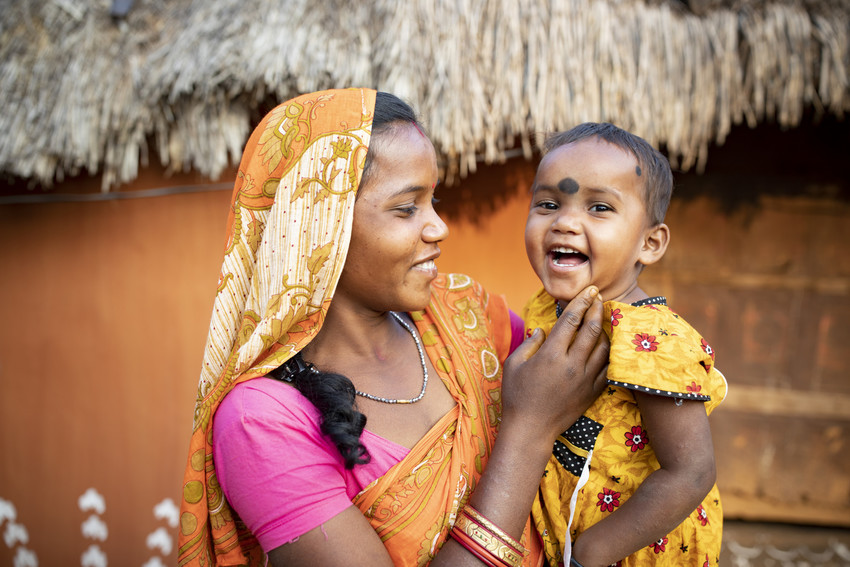
“She used to not be a happy child, but now she has such joy,”
says Rashmita,
mom of Smruti, age 2. Photo by Jake Lyell.
3. COVID-19 and other disasters are taking a serious toll on children.

Health care workers care for a woman with COVID-19
using oxygen equipment provided by ChildFund.
The eyes of the world have been on India ever since a deadly second wave of the coronavirus gripped the country. Health care systems are completely overwhelmed, especially in low-income communities, and an ongoing lockdown has shuttered schools and businesses, crippling the economy. But just when it seemed like things couldn’t get any worse, two cyclones ripped through India’s western and eastern coasts in two weeks, destroying thousands of homes and livelihoods.
What does all this mean for children? Out of school indefinitely, often with few resources to keep them engaged in their education from home, they face an uncertain future. They are losing family members, friends and even caregivers to the virus. With many of their parents out of work, they are facing hunger and malnutrition of startling proportions. And for children who have also lost their homes to one of the cyclones, the world has become a terrifying and completely unpredictable place.
But, like the pristine lotus blossoms that flourish in roadside ponds throughout India, re-blooming from the murky water every morning, children are incredibly resilient – especially when they have a sponsor in their corner. The support you provide now can help them survive the pandemic and other disasters. Your letters can encourage them to stay strong. And when it’s time for their communities to rebuild, having you for a friend can make all the difference for their family’s financial and emotional recovery.
You can be a part of that journey, and you don’t even need to journey across the world to do it. Sponsor a child in India right now.
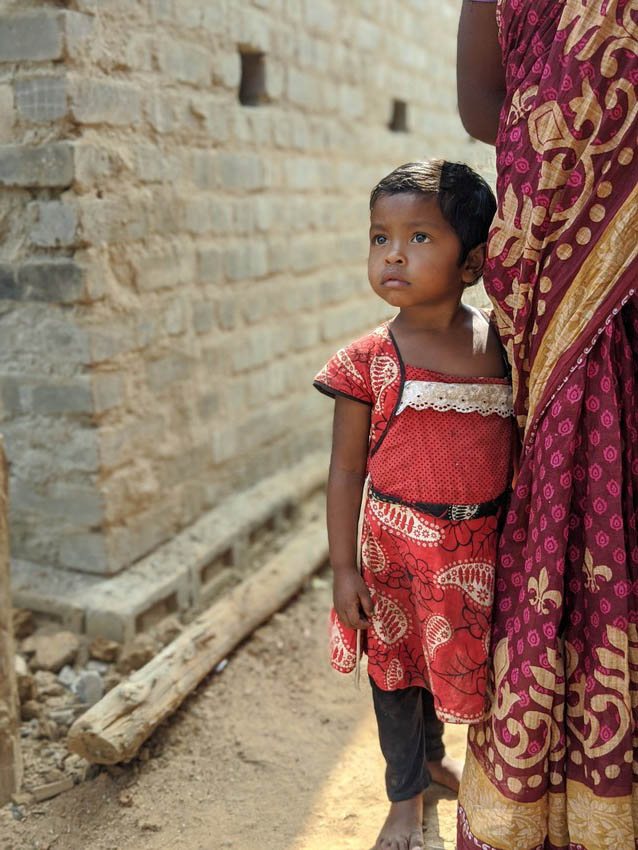
Loading...



